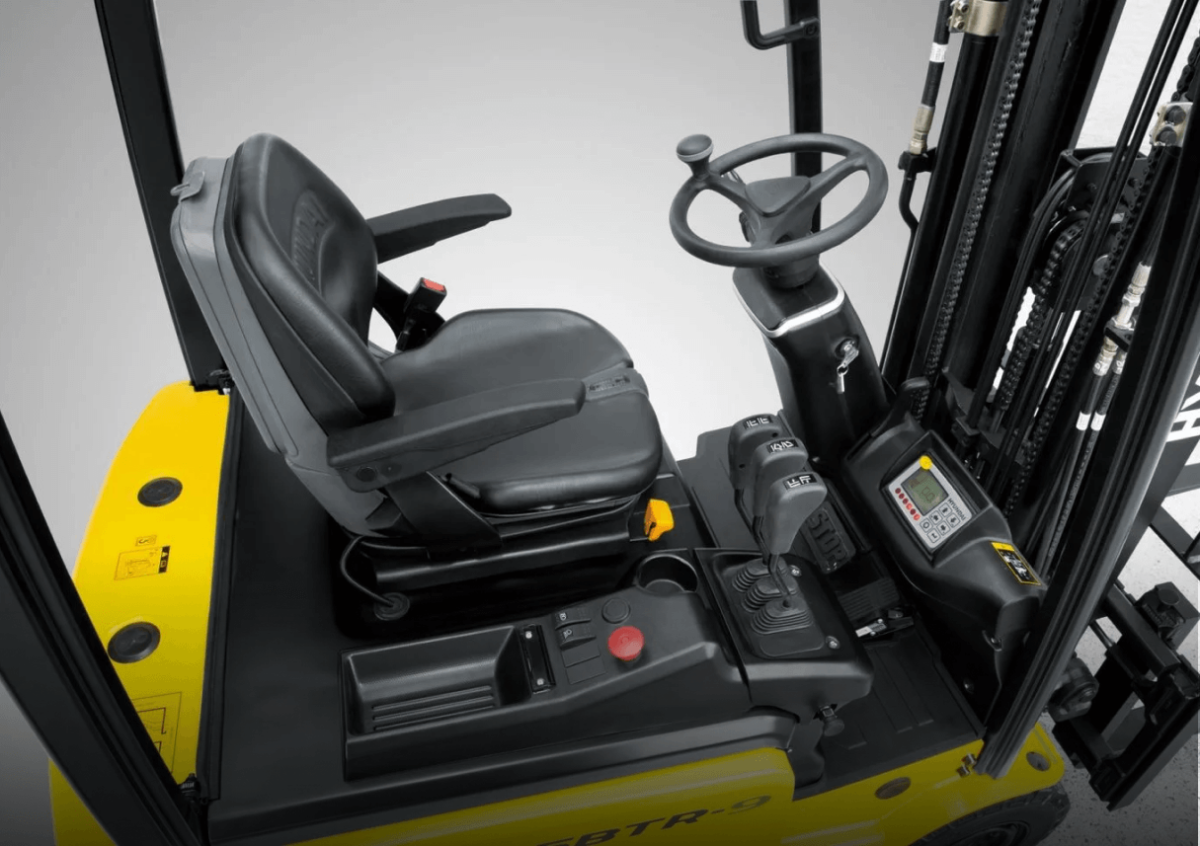Forklifts are indispensable tools in warehouses, factories, and construction sites. Their robust construction and reliability make them an essential component in logistics and production. In this article, we will examine the structure of forklifts, focusing on the key elements that ensure their safety and efficiency.
Forklift Construction – Engine and Drive System
The engine and drive system are critical components of every forklift, determining its performance, fuel consumption, and overall reliability. Below is a broader insight into these elements:
Engines
Types of Engines
- Electric Motors: Ideal for indoor operations due to their quiet operation and lack of exhaust emissions. They are powered by batteries that can be charged during work breaks.
- Internal Combustion Engines: Available in gasoline, diesel, and even LPG versions. They are characterized by higher power and are preferred in outdoor applications where emissions are not restricted.
Efficiency and Ecology
- Electric Step Motors: These are more energy-efficient and offer greater control over movement precision.
- Emission Reduction Technologies: Various technologies are used in internal combustion engines to reduce harmful gas emissions and meet environmental standards.
Drive System
Drive System Construction
- Transmissions: Responsible for transferring power from the engine to the wheels. They can be automatic or manual, depending on the forklift model.
- Type of Drive: The drive can be on the front or rear wheels, and in some models, all four wheels (4×4 drive), increasing stability and maneuverability on uneven surfaces.
Maintenance and Servicing
- Regular inspections: Regular maintenance of the drive system is crucial for maintaining safety and efficiency in forklift operation. Regular oil and filter changes in the engine and drive system prevent failures and extend the forklift’s lifespan.
Innovations and Trends
- Hybrid and Electric Solutions: The development of hybrid and electric technologies offers greater energy efficiency and reduces environmental impact.
- Fleet Management Systems: Modern forklifts are often equipped with advanced telemetry systems, allowing for monitoring engine and drive system performance, facilitating fleet management and optimizing operating costs.
Forklift Construction – Forks and Mast
In every forklift, the forks and mast play a central role in lifting, transporting, and placing loads. Here is a detailed description of these elements:
Forks
Construction and Material
- Typically made of high-strength steel, forks must withstand the weight of the load and the forces acting during lifting and lowering.
Adjustment for Loads
- Fork Spacing Adjustment: Some forklift models allow for fork spacing adjustment, increasing versatility in handling different types of loads.
- Variety of Sizes: Different sizes and shapes of forks are available, tailored to specific needs, such as handling barrels, pallets, or long items.
Mast
Types of Masts
- Standard Masts: Provide single-stage lifting, suitable for most applications.
- Telescopic Masts: Allow for lifting loads to greater heights, increasing operational flexibility in confined spaces.
Lifting Mechanisms
The use of hydraulic systems enables smooth and controlled lifting and lowering of loads.
Innovations and Safety
- Vision Systems: Modern forklifts may be equipped with cameras and sensors that enhance visibility and safety during load maneuvering.
- Height Limiters: Prevent excessive lifting of loads, which is crucial for the forklift’s stability.
Ergonomics and Efficiency
Operator-Focused Design
- Modern forklifts are designed to enhance operator comfort and efficiency, leading to higher productivity and less fatigue.
Work Process Optimization
- Well-designed forks and masts enable faster and more efficient loading and unloading operations, which is essential in high-activity warehouses and distribution centers.
Forklift Construction – Cabin, Tires, and Safety Systems
Safety and stability are crucial in every aspect of forklift operation. In this section, we will focus on the operator’s cabin, tires, and safety systems that are essential for safe and efficient operation.
Operator Cabin
Ergonomics and Comfort
- Designing the cabin with ergonomics in mind helps reduce operator fatigue and increases concentration. Elements such as adjustable seats, spaciousness, easy access to control panels, and visibility are of great importance.
Operator Protection
- The cabin is designed to protect the operator from external factors such as falling objects, extreme weather conditions, and noise.
Technology Application
- Modern cabins may be equipped with touch screens and monitoring and diagnostic systems, contributing to increased work efficiency.
Tires
Different Types of Tires
- Pneumatic Tires: Provide cushioning and are suitable for uneven surfaces.
- Solid Tires: Offer greater durability and are ideal for heavy-duty work on smooth surfaces.
Adaptation to Working Conditions
Tire selection should be tailored to the work environment—whether indoors or outdoors, the type of surface, and the nature and weight of the load.
Safety Systems
Brakes
- An effective braking system is essential for quick responses in emergencies. These systems often include elements such as disc brakes or hydraulic brakes.
Warning Systems
- Audible and visual warning signals, such as horns, warning lights, and traffic signals, are necessary for ensuring the forklift’s visibility in the workplace.
Rollover Prevention
- Rollover prevention structures, such as stabilizers or speed limiters during turns, ensure the forklift’s stability, especially when maneuvering loads at height.
Seat Belts and Other Safety Features
- Seat belts and other protective measures, such as safety cages or enclosed cabins, help protect the operator from serious accidents.





